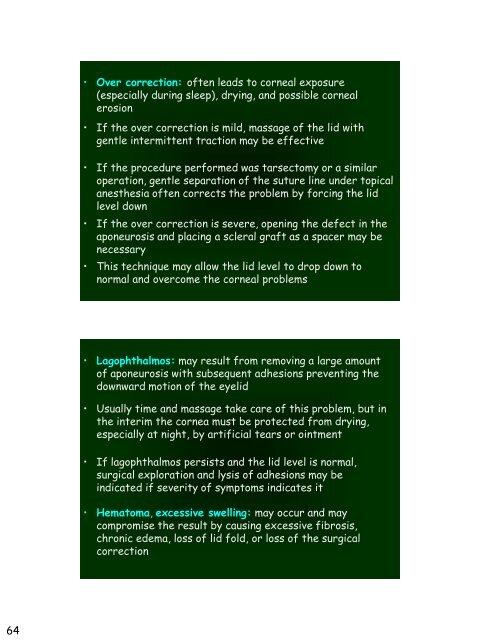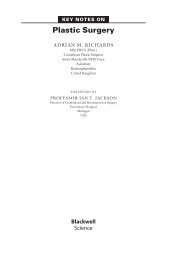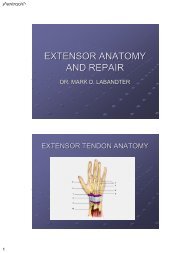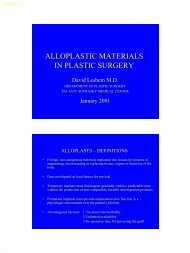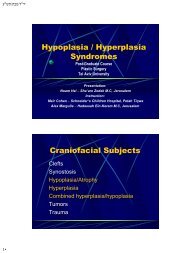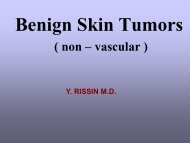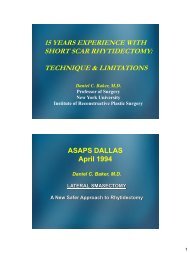Eyelid Reconstruction
Eyelid Reconstruction
Eyelid Reconstruction
You also want an ePaper? Increase the reach of your titles
YUMPU automatically turns print PDFs into web optimized ePapers that Google loves.
• Over correction: often leads to corneal exposure<br />
(especially during sleep), drying, and possible corneal<br />
erosion<br />
• If the over correction is mild, massage of the lid with<br />
gentle intermittent traction may be effective<br />
• If the procedure performed was tarsectomy or a similar<br />
operation, gentle separation of the suture line under topical<br />
anesthesia often corrects the problem by forcing the lid<br />
level down<br />
• If the over correction is severe, opening the defect in the<br />
aponeurosis and placing a scleral graft as a spacer may be<br />
necessary<br />
• This technique may allow the lid level to drop down to<br />
normal and overcome the corneal problems<br />
• Lagophthalmos: may result from removing a large amount<br />
of aponeurosis with subsequent adhesions preventing the<br />
downward motion of the eyelid<br />
• Usually time and massage take care of this problem, but in<br />
the interim the cornea must be protected from drying,<br />
especially at night, by artificial tears or ointment<br />
• If lagophthalmos persists and the lid level is normal,<br />
surgical exploration and lysis of adhesions may be<br />
indicated if severity of symptoms indicates it<br />
• Hematoma, excessive swelling: may occur and may<br />
compromise the result by causing excessive fibrosis,<br />
chronic edema, loss of lid fold, or loss of the surgical<br />
correction<br />
64


